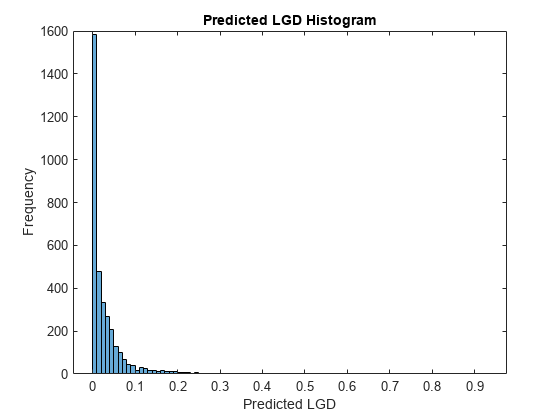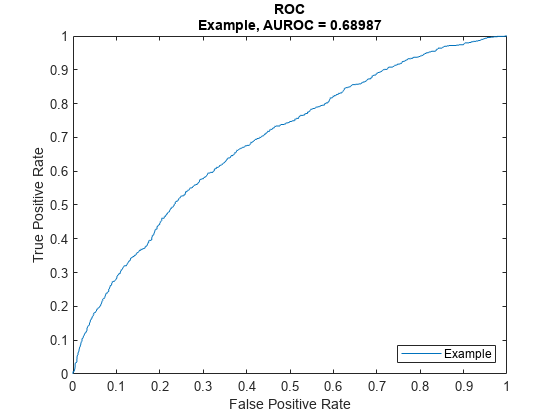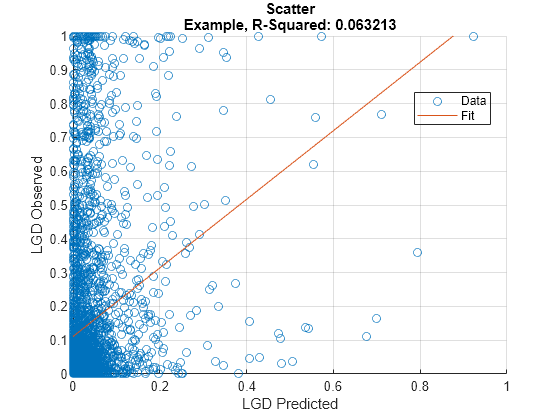fitLGDModel
Description
lgdModel = fitLGDModel(___,Name,Value)ModelType.
Examples
Input Arguments
Name-Value Arguments
Output Arguments
References
[1] Baesens, Bart, Daniel Roesch, and Harald Scheule. Credit Risk Analytics: Measurement Techniques, Applications, and Examples in SAS. Wiley, 2016.
[2] Bellini, Tiziano. IFRS 9 and CECL Credit Risk Modelling and Validation: A Practical Guide with Examples Worked in R and SAS. San Diego, CA: Elsevier, 2019.


